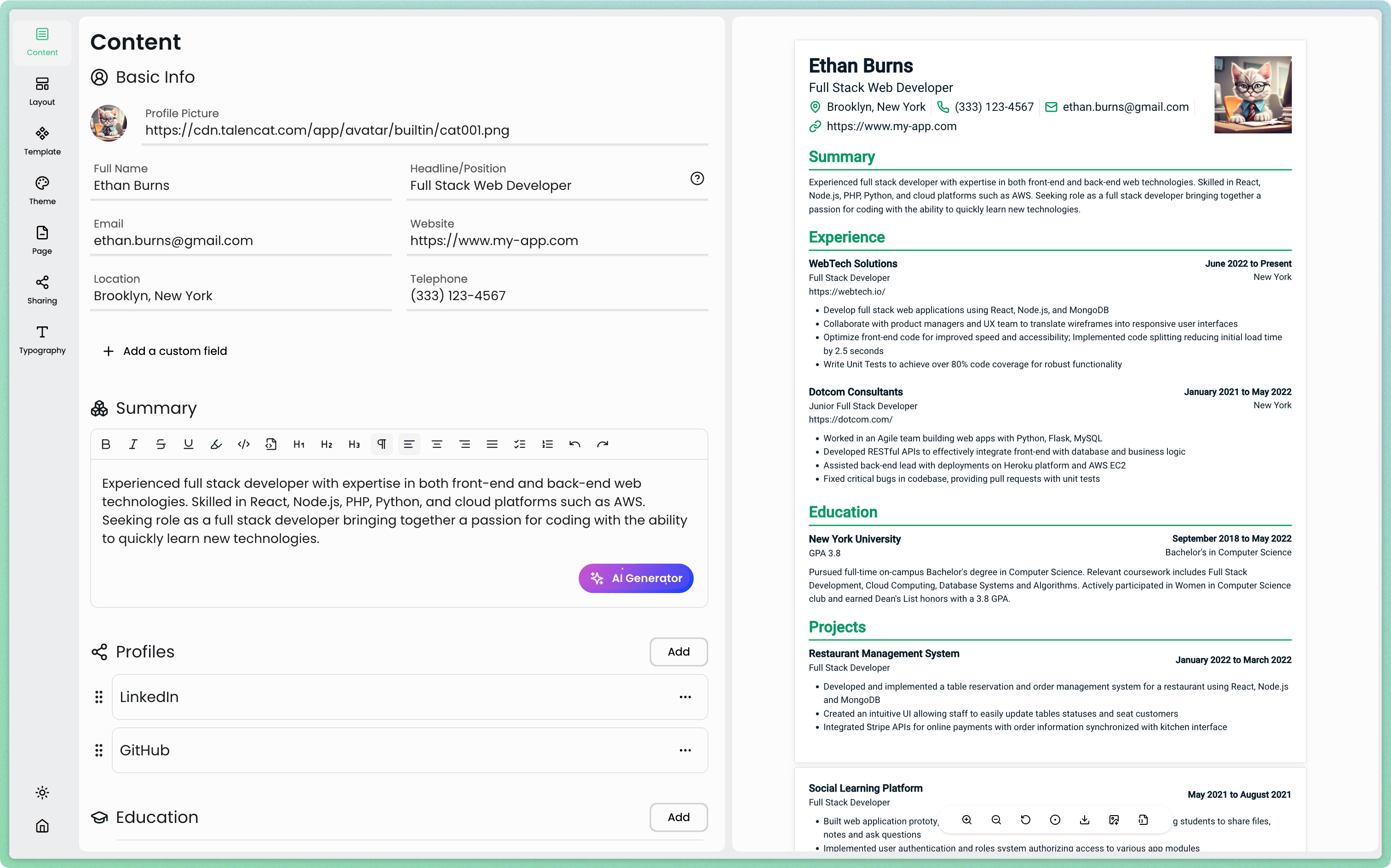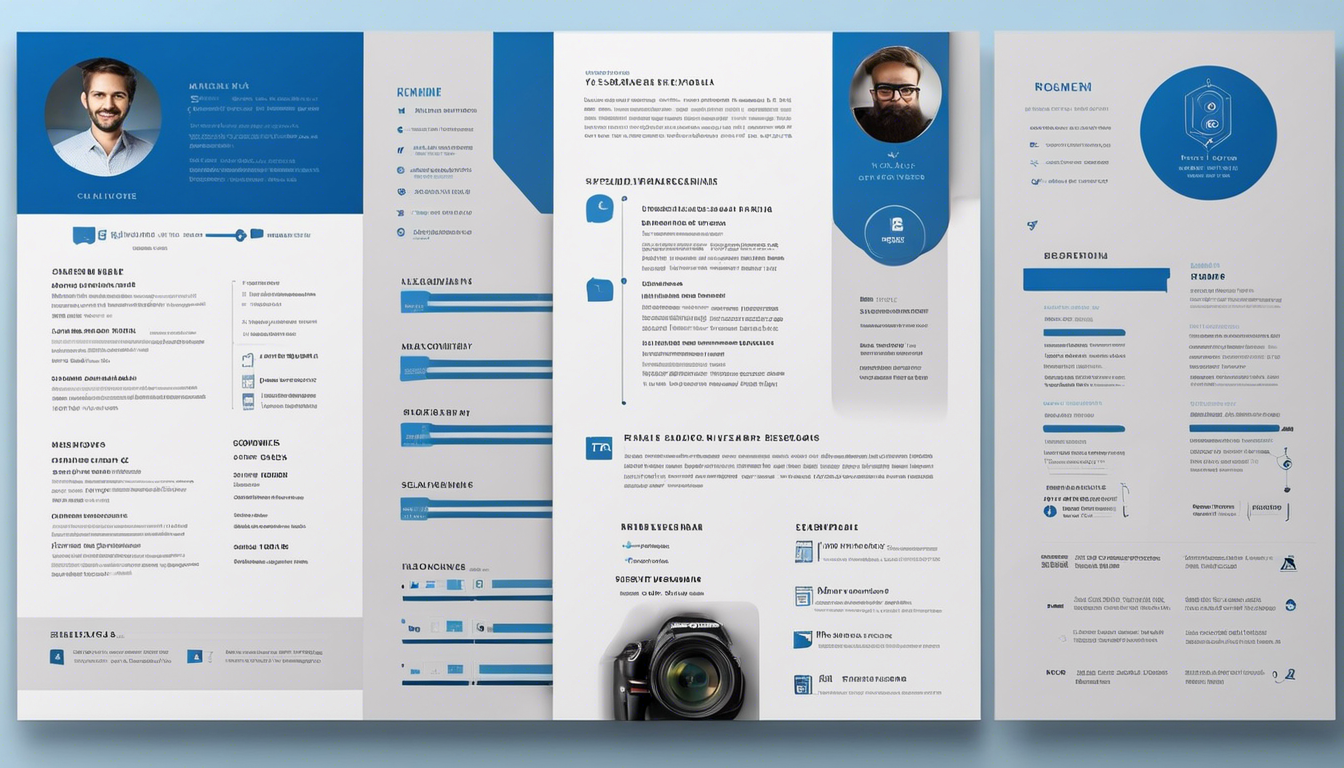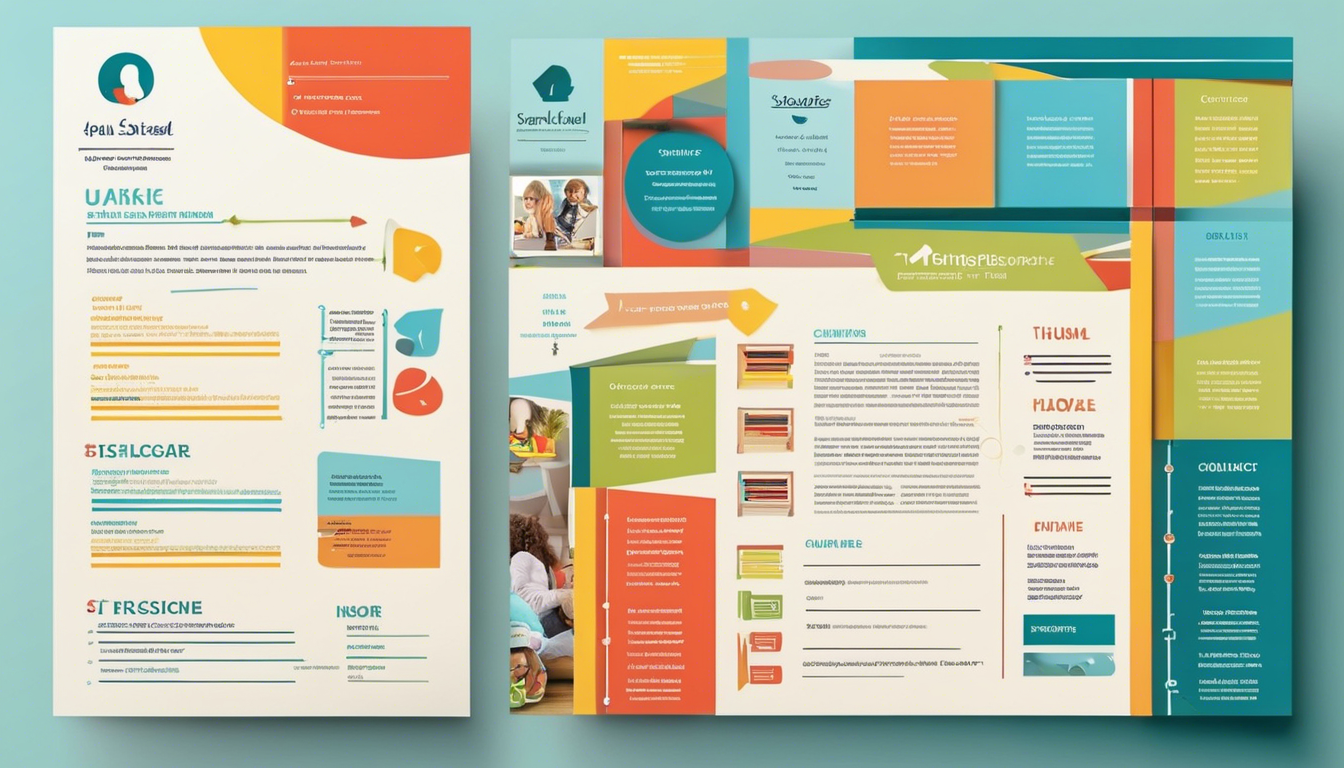In the rapidly evolving world of digital imaging, the role of a Camera Image Quality Tuning Engineer has become increasingly crucial. These professionals are at the forefront of ensuring that the images captured by our devices meet the highest standards of quality and performance. As the demand for superior image quality continues to grow across various industries, from smartphones to autonomous vehicles, the need for skilled Camera Image Quality Tuning Engineers has never been greater. This article aims to provide a comprehensive guide for those looking to enter or advance in this field, with a particular focus on crafting an effective resume that showcases the unique skills and experiences required for success in this specialized area.
Also read:

Introduction to Camera Image Quality Tuning Engineering
Camera Image Quality Tuning Engineering is a specialized field that combines technical expertise in image processing with a keen eye for visual aesthetics. These engineers play a pivotal role in developing and optimizing the image quality of digital cameras and imaging systems.
Overview of the Role
Camera Image Quality Tuning Engineers are responsible for fine-tuning the image processing algorithms and hardware settings that determine the final quality of digital images. They work to enhance various aspects of image quality, including color accuracy, sharpness, noise reduction, and dynamic range. Their work ensures that cameras produce images that are not only technically accurate but also visually appealing to end-users.
Importance of Image Quality Tuning in the Industry
The importance of image quality tuning cannot be overstated in today's digital age. With the proliferation of cameras in smartphones, tablets, laptops, and other devices, consumers have come to expect high-quality images in every aspect of their digital lives. Industries such as automotive, security, and healthcare also rely heavily on precise and clear imaging for critical applications. As a result, the demand for skilled Camera Image Quality Tuning Engineers continues to grow, making it an attractive career path for those with the right skills and passion for imaging technology.
Key Responsibilities of a Camera Image Quality Tuning Engineer
The role of a Camera Image Quality Tuning Engineer encompasses a wide range of responsibilities, all centered around optimizing image quality and performance. Understanding these key areas is essential for anyone looking to build a career in this field and create a compelling resume.
Image Signal Processing (ISP) Algorithms
One of the primary responsibilities of a Camera Image Quality Tuning Engineer is to develop, implement, and optimize Image Signal Processing (ISP) algorithms. These algorithms are the backbone of digital image processing, responsible for transforming raw sensor data into high-quality images. Key tasks in this area include:
- Designing and implementing algorithms for color correction, noise reduction, and sharpening
- Optimizing existing algorithms for better performance and image quality
- Developing new techniques to address specific imaging challenges, such as low-light performance or high dynamic range (HDR) imaging
Camera and Image Quality Assessment
Another crucial aspect of the role is the assessment of camera performance and image quality. This involves:
- Conducting thorough testing of camera systems under various lighting conditions and scenarios
- Analyzing image quality metrics and subjective visual quality
- Identifying areas for improvement and developing strategies to enhance overall image quality
Collaboration with Cross-Functional Teams
Camera Image Quality Tuning Engineers often work as part of larger teams, collaborating with hardware engineers, software developers, and product managers. This collaboration is essential for:
- Ensuring that image quality tuning aligns with overall product goals and specifications
- Providing input on hardware selection and design to optimize image quality
- Working with software teams to integrate image processing algorithms into the final product
Performance Optimization and Troubleshooting
Optimizing the performance of imaging systems and resolving technical issues are also key responsibilities. This includes:
- Fine-tuning algorithms for optimal performance on specific hardware platforms
- Identifying and resolving image quality issues in production devices
- Developing and implementing automated testing procedures to ensure consistent image quality
Essential Skills for a Camera Image Quality Tuning Engineer
To excel in the field of Camera Image Quality Tuning Engineering, professionals need to possess a unique blend of technical expertise and creative problem-solving skills. When crafting a resume for this role, it's crucial to highlight these essential skills to stand out to potential employers.
Technical Skills
Understanding of Image Sensors
A deep understanding of image sensor technology is fundamental for Camera Image Quality Tuning Engineers. This includes knowledge of:
- Different types of image sensors (e.g., CMOS, CCD)
- Sensor characteristics and their impact on image quality
- Color filter arrays and their role in color reproduction
Proficiency in Software Tools and Programming Languages
Camera Image Quality Tuning Engineers must be proficient in a variety of software tools and programming languages. Key areas of expertise include:
- Image processing software such as MATLAB, OpenCV, and proprietary tools
- Programming languages like C++, Python, and CUDA for algorithm development and implementation
- Version control systems (e.g., Git) for collaborative development
Analytical Skills
Strong analytical skills are essential for interpreting complex data and making informed decisions about image quality improvements. This includes:
- Ability to analyze image quality metrics and subjective visual assessments
- Critical thinking skills to identify root causes of image quality issues
- Problem-solving skills to develop innovative solutions to complex imaging challenges
Communication and Teamwork Skills
Effective communication and collaboration are crucial in this role, as Camera Image Quality Tuning Engineers often work with diverse teams. Important skills include:
- Clear and concise technical writing for documentation and reports
- Ability to explain complex technical concepts to non-technical stakeholders
- Strong interpersonal skills for effective teamwork and cross-functional collaboration
Typical Qualifications
When building a resume for a Camera Image Quality Tuning Engineer position, it's important to highlight the qualifications that are most relevant to the role. Employers in this field typically look for a combination of educational background, certifications, and practical experience.
Educational Background
Most Camera Image Quality Tuning Engineer positions require at least a bachelor's degree in a relevant field. Common educational backgrounds include:
- Electrical Engineering
- Computer Science
- Image Processing
- Computer Vision
- Physics (with a focus on optics)
Many employers prefer candidates with advanced degrees, such as a Master's or Ph.D., especially for senior positions or roles involving research and development.
Relevant Certifications
While not always mandatory, certain certifications can enhance a candidate's profile and demonstrate specialized knowledge. Some relevant certifications include:
- IEEE Certified Biometrics Professional (CBP)
- SPIE Professional Certification in Optical Engineering
- Certified Imaging Scientist (CIS) from the Society for Imaging Science and Technology
Experience Requirements
Experience requirements can vary depending on the specific role and company, but generally include:
- 2-5 years of experience in image processing or related fields for entry-level positions
- 5-10+ years of experience for senior or lead engineer positions
- Demonstrated experience with specific imaging technologies or applications (e.g., smartphone cameras, automotive imaging systems)
- Proven track record of successful image quality tuning projects

Crafting an Effective Resume for a Camera Image Quality Tuning Engineer
Creating a compelling resume is crucial for standing out in the competitive field of Camera Image Quality Tuning Engineering. A well-structured resume that effectively highlights your skills, experience, and achievements can significantly increase your chances of landing an interview.
Structure of the Resume
Contact Information
Begin your resume with your contact information, including:
- Full name
- Professional email address
- Phone number
- Location (city and state/country)
- LinkedIn profile or professional website (if applicable)
Professional Summary
A concise professional summary should follow, highlighting:
- Your years of experience in Camera Image Quality Tuning Engineering
- Key areas of expertise (e.g., ISP algorithm development, image quality assessment)
- Notable achievements or specializations
Example: "Experienced Camera Image Quality Tuning Engineer with 7+ years of expertise in developing and optimizing ISP algorithms for smartphone cameras. Proven track record of improving image quality metrics by 30% and reducing processing time by 25% through innovative algorithm design."
Work Experience
List your work experience in reverse chronological order, focusing on roles relevant to Camera Image Quality Tuning Engineering. For each position, include:
- Job title
- Company name and location
- Dates of employment
- 3-5 bullet points describing key responsibilities and achievements
Example: "Senior Image Quality Engineer | TechVision Inc. | San Francisco, CA | 2018-Present
- Led the development and implementation of advanced noise reduction algorithms, resulting in a 40% improvement in low-light image quality
- Collaborated with cross-functional teams to optimize camera performance for flagship smartphone models, contributing to a 15% increase in DxOMark scores
- Developed automated image quality assessment tools, reducing manual testing time by 50% and improving consistency in quality evaluations"
Education
Include your educational background, listing:
- Degree(s) earned
- Institution name and location
- Graduation date
- Relevant coursework or academic achievements (if applicable)
Skills Section
Create a dedicated skills section to highlight your technical and soft skills relevant to Camera Image Quality Tuning Engineering. Include:
- Technical skills (e.g., ISP algorithm development, image sensor technology, specific software tools)
- Programming languages (e.g., C++, Python, MATLAB)
- Soft skills (e.g., problem-solving, teamwork, communication)
Crafting a Stellar Camera Image Quality Tuning Engineer Resume with TalenCat
For Camera Image Quality Tuning Engineers looking to showcase their specialized skills and experience, TalenCat CV Maker offers an intuitive platform to create a professional and impactful resume. Follow this step-by-step guide to build a resume that highlights your expertise in camera image quality tuning.
Step 1: Begin by logging into TalenCat CV Maker and clicking the + Create Resume button in the top right corner to start a new resume.

Step 2: Name your resume something relevant like "Camera Image Quality Tuning Engineer" and select Create with Example to leverage a pre-built template tailored for technical roles.

Step 3: You'll now enter the reactive CV editor. Here, you can customize each section to highlight your specific camera image quality tuning skills, projects, and achievements. As you edit, the right panel will update in real-time, giving you an immediate preview of your resume.

Key Sections to Focus On:
- Professional Summary: Briefly outline your expertise in camera image quality tuning, mentioning key skills like image processing algorithms, color science, and sensor calibration.
- Technical Skills: List relevant tools and technologies such as MATLAB, Python, OpenCV, and specific camera testing equipment you're proficient with.
- Work Experience: Detail your roles in camera image quality tuning projects, emphasizing improvements in image sharpness, color accuracy, and noise reduction.
- Education and Certifications: Include relevant degrees in fields like Electrical Engineering or Computer Vision, as well as any specialized certifications in image processing or camera technology.
- Projects: Highlight specific camera systems or imaging products you've worked on, detailing your contributions to image quality enhancements.
Leveraging AI for Resume Enhancement
TalenCat CV Maker also offers a powerful AI-assisted resume writing feature. This can be particularly helpful for suggesting industry-specific terminology and formatting that's ideal for Camera Image Quality Tuning Engineer positions.

Once you've completed your resume, you can easily export it as a PDF or image file. For convenient sharing with potential employers, consider enabling the online share feature to generate a shareable link to your resume.
By following these steps and utilizing TalenCat CV Maker's features, you'll create a compelling Camera Image Quality Tuning Engineer resume that effectively showcases your skills and experience in this specialized field.
Tailoring Your Resume to Job Descriptions
Using Keywords from Job Listings
Carefully review job descriptions and incorporate relevant keywords into your resume. This helps your application pass through Applicant Tracking Systems (ATS) and catch the attention of hiring managers. Common keywords for Camera Image Quality Tuning Engineer positions might include:
- Image Signal Processing (ISP)
- Color correction
- Noise reduction
- Sharpening algorithms
- Camera characterization
- Image quality metrics
- CMOS/CCD sensors
Highlighting Relevant Projects and Achievements
Showcase specific projects and achievements that demonstrate your expertise in Camera Image Quality Tuning Engineering. For example:
- "Developed a novel HDR algorithm that increased dynamic range by 2 stops while maintaining natural color reproduction"
- "Optimized auto-focus algorithms, reducing focus time by 30% in low-light conditions"
- "Led a team in developing a proprietary image quality assessment tool, resulting in a 40% reduction in time-to-market for new camera products"
Common Mistakes to Avoid in Your Resume
Overgeneralization of Skills
One of the most common mistakes is presenting skills and experiences in a way that is too general or vague. Camera Image Quality Tuning Engineering is a specialized field, and employers are looking for specific expertise. Instead of broad statements, focus on detailing your skills and experiences that are directly relevant to the role.
Avoid: "Experienced in image processing and algorithm development"
Instead, use: "Developed and optimized ISP algorithms for noise reduction and color correction, resulting in a 25% improvement in image quality scores for low-light photography"
Lack of Specificity in Job Descriptions
When describing your past roles and responsibilities, it's crucial to provide specific details and quantifiable achievements. Vague job descriptions fail to convey the depth of your experience and the impact of your work.
Avoid: "Worked on improving image quality for various camera systems"
Instead, use: "Led a team of 5 engineers in developing a custom image quality tuning pipeline for automotive cameras, resulting in a 40% reduction in image artifacts and improved object detection accuracy by 30% in challenging lighting conditions"
Poor Formatting and Organization
A poorly formatted or disorganized resume can be difficult to read and may cause hiring managers to overlook important information. Common formatting mistakes include:
- Inconsistent font sizes or styles
- Cluttered layout with insufficient white space
- Lack of clear section headings
- Excessive use of technical jargon without explanation
To avoid these issues:
- Use a clean, professional font and consistent formatting throughout
- Organize information into clear, well-defined sections
- Use bullet points to make information easily scannable
- Balance technical details with clear, concise language
Resources for Building a Strong Resume
Creating a standout resume for a Camera Image Quality Tuning Engineer position can be challenging, but there are numerous resources available to help you craft an effective document that showcases your skills and experience.
Online Resume Builders and Templates
Several online platforms offer resume builders and templates specifically designed for technical roles. These can provide a good starting point for structuring your resume:
- LinkedIn Resume Builder: Utilizes your LinkedIn profile to create a professional resume.
- Canva: Offers a variety of customizable templates, including those suitable for engineering roles.
- Resume.io: Provides industry-specific templates and a user-friendly interface for creating polished resumes.
When using these tools, remember to customize the template to highlight your unique experiences and skills relevant to Camera Image Quality Tuning Engineering.
Examples of Successful Resumes
Studying examples of successful resumes from professionals in the field can provide valuable insights into effective formatting and content. Some resources for finding such examples include:
- IEEE ResumeLab: Offers resume samples for various engineering disciplines.
- GitHub: Some engineers share their resumes on GitHub, which can be particularly useful for seeing how to present technical skills and projects.
- Professional networking events: Attend industry events where you might have the opportunity to exchange resume tips with experienced professionals.
Professional Networking Sites and Forums
Engaging with professional communities can provide valuable feedback on your resume and insights into industry trends. Some useful platforms include:
- LinkedIn: Join groups related to image processing and camera engineering to connect with professionals and potentially find mentors.
- Stack Overflow: Participate in discussions related to image processing algorithms and tools to demonstrate your expertise and learn from others.
- ImageProcessingForum.com: A specialized forum where you can engage with other professionals in the field and potentially share resume tips.
- SPIE (International Society for Optics and Photonics): Offers career resources, including resume advice, for professionals in optics and photonics.
Remember to actively participate in these communities, sharing your knowledge and asking thoughtful questions. This engagement can not only help improve your resume but also expand your professional network in the field of Camera Image Quality Tuning Engineering.
Conclusion
As we've explored throughout this guide, crafting an effective resume for a Camera Image Quality Tuning Engineer position requires a thoughtful approach that highlights your unique skills, experiences, and achievements in this specialized field.
The Future of Camera Image Quality Tuning Engineering
The field of Camera Image Quality Tuning Engineering is poised for continued growth and evolution. As imaging technology advances, new challenges and opportunities will emerge, including:
- Integration of artificial intelligence and machine learning in image processing
- Development of advanced computational photography techniques
- Optimization for emerging display technologies, such as high refresh rate and HDR screens
- Addressing the increasing demands of multi-camera systems in smartphones and automotive applications
These trends underscore the importance of continuous learning and adaptation for professionals in this field. Your resume should reflect not only your current skills but also your capacity to grow and innovate in this dynamic industry.
Final Tips for Aspiring Engineers
As you prepare your resume for a Camera Image Quality Tuning Engineer position, keep these final tips in mind:
- Tailor your resume for each application, emphasizing the skills and experiences most relevant to the specific job description.
- Quantify your achievements whenever possible, using metrics that demonstrate the impact of your work on image quality and system performance.
- Showcase your problem-solving abilities by highlighting specific challenges you've overcome in your previous roles.
- Keep your resume concise and focused, aiming for a maximum of two pages for most positions.
- Proofread carefully to ensure your resume is free of errors and presents a professional image.
- Consider including a link to a portfolio or GitHub repository that showcases your technical projects or contributions to open-source imaging tools.
- Stay informed about the latest trends and technologies in the field, and reflect this knowledge in your resume and cover letter.
By following these guidelines and continuously refining your skills, you can create a compelling resume that effectively communicates your value as a Camera Image Quality Tuning Engineer. Remember that your resume is often the first impression you make on potential employers, so invest the time and effort to make it as strong and representative of your capabilities as possible. With a well-crafted resume in hand, you'll be well-positioned to pursue exciting opportunities in this dynamic and rewarding field.




